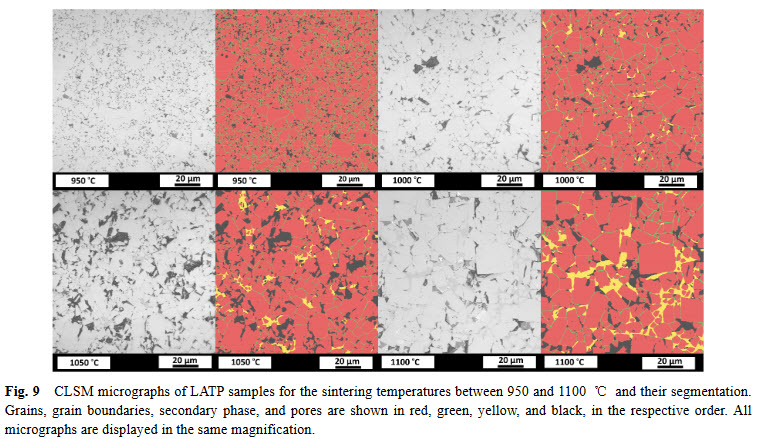Combined quantitative microscopy on the microstructure and phase evolution in Li Al Ti (PO4) ceramics

Lithium aluminum titanium phosphate (LATP) is one of the materials under consideration as an electrolyte in future all-solid-state lithium-ion batteries. In ceramic processing, the presence of secondary phases and porosity play an important role. In a presence of more than one secondary phase and pores, image analysis must tackle the difficulties about distinguishing between these microstructural features. In this study, we study the phase evolution of LATP ceramics sintered at temperatures between 950 and 1100 °C by image segmentation based on energy-dispersive X-ray spectroscopy (EDS) elemental maps combined with quantitative analysis of LATP grains. We found aluminum phosphate (AlPO4) and another phosphate phase ((Lix)PyOz). The amount of these phases changes with sintering temperature. First, since the grains act as an aluminum source for AlPO4 formation, the aluminum content in the LATP grains decreases. Second, the amount of secondary phase changes from more (Lix)PyOzat 950 °C to mainly AlPO4 at 1100 °C sintering temperature. We also used scanning electron microscopy (SEM) and confocal laser scanning microscopy (CLSM) to study the evolution of the LATP grains and AlPO4, and LATP grain size increases with sintering temperature.In addition, transmission electron microscopy (TEM) was used for the determination of grain boundary width and to identify the amorphous structure of AlPO.